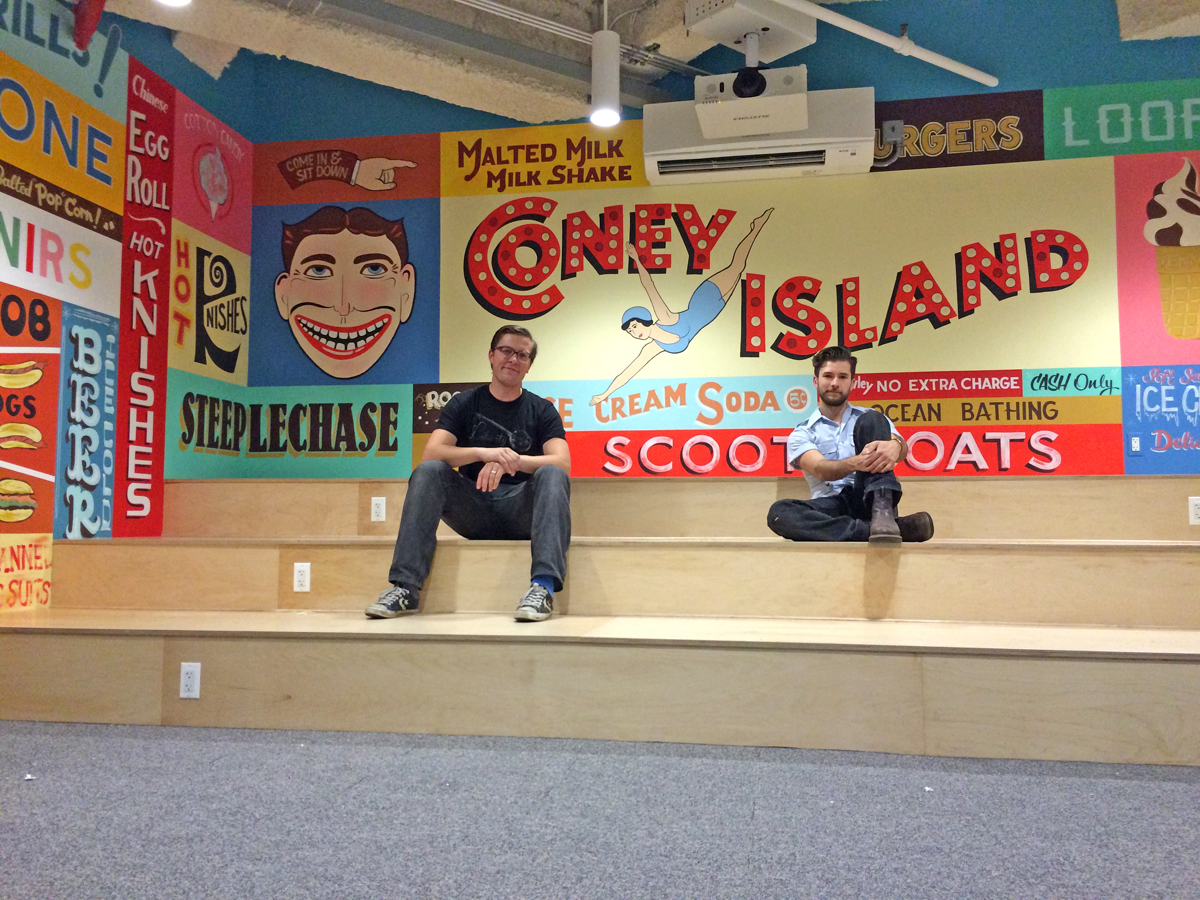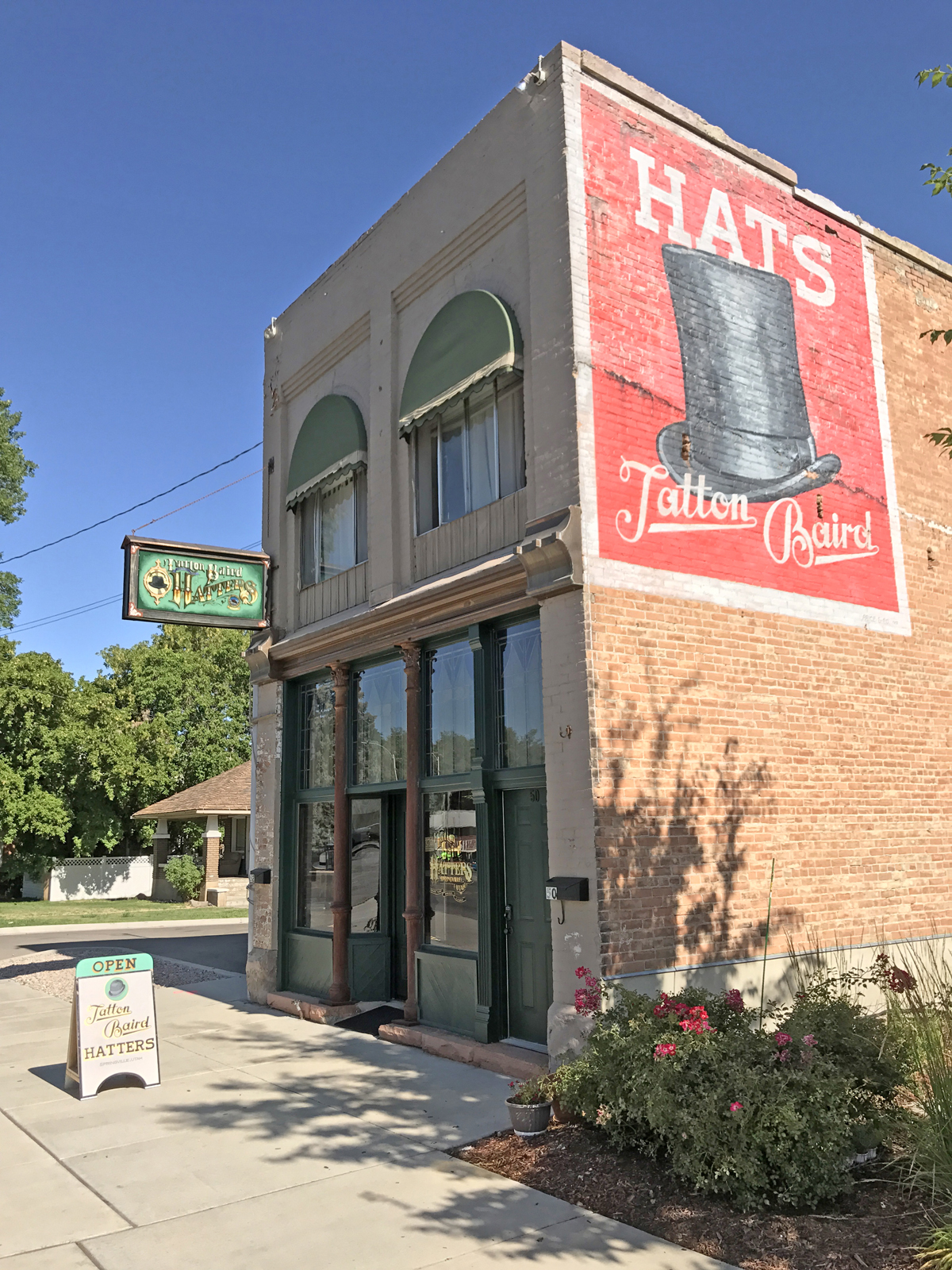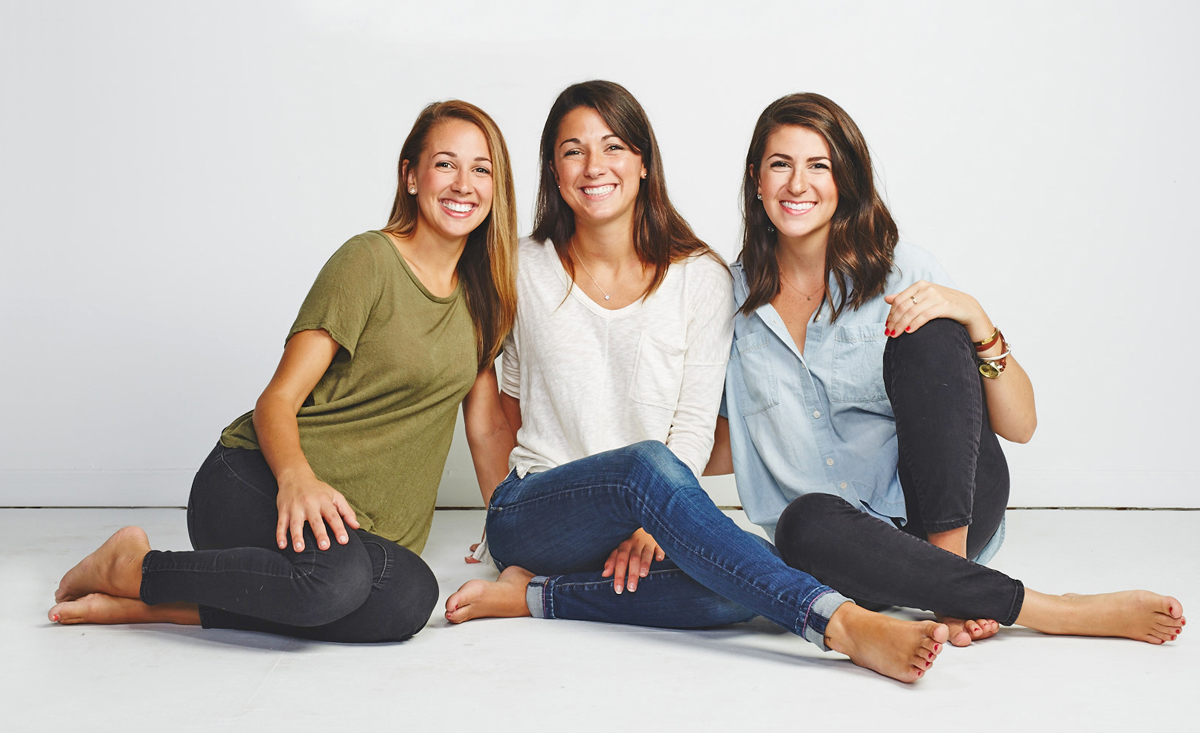Design
Next Generation
A new wave of painted, carved signmakers emerges.
Published
7 years agoon

Like many impressionable youngsters around the globe, my grandfather was the epitome of several superhero-esque axioms. Albert Fishback was the bravest person I knew. He was the strongest person I knew. (The man survived World War II and the Korean War, and his forearms were the size of crane truck tires, so I’m not entirely off-base here.) He was also a gifted craftsman. When I was in grade school, he renovated my mother’s basement by himself – at age 70. He cut the wood. He put up the drywall. He configured the electrical wiring. Whenever I walk down those stairs today, I’m often reminded of him and the labor he graciously submitted to make my mother’s house more of a home.
That same sense of homemade practicality and can-do attitude can be found in painted and carved signs – which, as it turns out, are virtues also passed down from one generation to the next, though not necessarily in brick-and-mortar form.
A HAPPY ACCIDENT
Raised in Magna, UT, a small copper mining town located a short drive west on state Route 201 from Salt Lake City, Colt Bowden credits the influence of his great-grandfathers – one worked in a copper mine as a chemist, the other operated a letter- press and linotype machine for a local newspaper – for his affection for letters and precious metals. A degree in illustration from Brigham Young University in 2012 (Bowden paid his way by painting signs) and logo and illustration work soon followed. After an acquaintance became a business partner, Bowden launched MAC Sign Painting with Mitch Horning in McMinnville, OR.
MAC Sign Painting (MAC stands for “Mitch and Colt”) is intentionally old school, avoiding the influence of technology in production as much as possible. The rationale is simple: preserve their checkbook and their creative environment. “We approach our work as an art project rather than just commercial sign work,” Bowden said. “We like to live between commercialized and fine art.”
MAC has existed for three years, but before they went into business together, Bowden and Horning knew each other through Bowden’s sister-in-law, who, like Horning, grew up in McMinnville. When Bowden moved to McMinnville with his family – Bowden’s wife is from the area – Horning was just getting his start in sign painting.
“I said, ‘Hey, do you want to compete or join forces?’” Bowden remembered.
AdvertisementA lifelong “doodler,” Horning turned to a variety of creative outlets (assemblage, interior design, lamp making, photography, pottery, woodwork) and ultimately found his way into logos (including designing tattoos for friends) and lettering design, forming his own personal style. Horning had also previously done a studio visit with Bowden in Los Angeles, where his eventual collaborator showed him a few tricks of the trade.
“It all happened pretty organically, a slow progression,” Horning said. “My tendency to take on odd jobs and creative side gigs turned into just sign painting.”
A “traditional sign painting outfit” (Bowden’s words), MAC paints signs and logos by hand, and they don’t dabble in vinyl. Bowden handles their (limited) work on computers plus the financials; design and creative work are completed by both members of MAC’s two-man team. MAC works with companies of all sizes, from small businesses (more on that in a second) to the big fish (Nike).
“We usually don’t say no [to a project] unless it would drain us creatively or it’s something we wouldn’t want to put our name on.” Bowden said, before he added, “[But] we’ve also got to feed our families and pay the mortgages.”
HAT BY HAND

One of MAC Sign Painting’s recent projects was for Tatton Baird Hatters, a hat shop in Springville, UT that sells classic Western-style hats.
AdvertisementMAC collaborated with Tatton Baird to complete all of the shop’s signage, notably a double-sided reverse-glass-gilded sign that hangs off the front of the building, and the handpainted and gilded signage that adorns the shop’s windows. The latest project was a ghost sign in the top left corner of the building’s exterior east brick wall.
The project started with Bowden building a mockup of the sign, using Adobe Photoshop to adjust the size, scale and colors of the mockup onto the building. Bowden and Josh Longoria (MAC’s apprentice) initiated the painting process by covering up paint from a previous sign that had been blocked out. They completed a light wash of thinned-down primer paint, stroking it in with large brushes. The next step was pouncing the design to the wall using a paper pattern. Then, they cut in the background by making sure to brush lightly in the top two-thirds of the sign, and filling it in fully in the bottom third where the roof line of a formerly adjoining and now-razed building was located. After the red paint was applied, Bowden painted the black hat modeled on a photograph of a 100-year-old top hat Tatton Baird has in its collection.
The next day, Bowden and Longoria applied washes to fade the look of the paint, and crafted stains and marks on the sign to make it look as if nails and bolts in the wall had left rust and other stains behind. The project was done with Benjamin Moore Aura paints and custom glazes.
The finished product is certainly a sign to tip your cap to, as it meshes wonderfully with the old-time aura Tatton Baird Hatters strives for.
‘WE CAN MAKE A BUSINESS OUT OF THIS’

Located a few blocks away from the Ohio River in Covington, KY, a not-so-traditional family-owned business is turning heads by producing wood signage with impressive carved effects.
AdvertisementGrainwell is not a family business in the traditional sense; sisters Christine, Melyssa and Michele Kirn did not inherit this enterprise from their parents. On the other hand, Grainwell is very much a family business in formation and values, with the inspiration, hands-on resourcefulness and persistence originating from their upbringing in nearby Ft. Wright.
What started out as wood décor gifts for family and friends in 2014 has spawned into a six-employee (three full-time, three part-time) venture that has graduated from limited space in their father’s auto shop to their own personal timber haven in Covington. A former architect (Christine), fashion designer (Melyssa) and still-nurse (Michele is part-time with Grainwell), the sisters appear to work seamlessly, due in part to their complementary skill sets. Melyssa heads up product design and handles Grainwell’s financials; Michele controls customer service, emails, wholesale accounts and the website; and Christine runs all aspects of production, from fabrication to shipping.
Even the name “Grainwell” – derived from wood grain and their pledge to deliver quality products – was a collaborative effort. After a brainstorming session in their parent’s basement spontaneously emitted “Grainwell,” the sisters parted ways and agreed to sleep on the possible moniker before making a decision. “We went back to our apartments and an hour later we texted each other and said, ‘We like it. Let’s buy the domain,’” Christine said. “We knew Grainwell was it.”
The sisters’ father is guided by a proactive, independent spirit – in addition to running an auto business for nearly 40 years, Ron Kirn remodeled the family home on his own – and his penchant for personal craftsmanship passed down to his daughters.
“My dad has always had the mindset of ‘I can do it myself; I’m not going to pay somebody.’ Or, ‘I can figure it out,’” Christine said. “I think that has made a huge impact on why we make things ourselves rather than going out and buying them.”
WOODWORKING WONDERS

Grainwell’s production process begins with a client meeting to iron out the design specifics.
“Sometimes they just give us an idea and let us run with it,” Christine said, “and other times they want to be a part of every step.”
After Melyssa gains customer approval, she inserts vector lines into the design using Adobe Illustrator or Photoshop. Next, Christine takes over, transferring the data into a DXF file using Rhino 3D and inputting the data into their laser cutter’s programming. “That way I can inspect the file one last time before we cut or engrave the items,” Christine said.
Grainwell sands (using a Festool Orbital Sander, Festool Dust Collector and/or a JET Drum Sander) and finishes everything that comes out of the laser. The products are stained or sprayed with Sherwin-Williams Pre-Catalyzed Lacquer (dull finish).
“My favorite finish is when I spray one or two coats on and let it completely dry,” Christine said. “Then I sand it with 600-grit sandpaper, wipe it with a tack rag and put the finishing coat on.”
Assembly comes next with hand gluing. If they need resin or epoxy, Grainwell goes with West System or Stick Fast. “It all depends on the time- frame we are working with and where the piece is going,” Christine said.
Wood-wise, Grainwell uses birch plywood, solid walnut, sapele and white oak, but also acquires other timber (cherry, spalted maple, walnut, others) from a local lumber yard.
So what does the future hold for Grainwell? More employees. A new facility. Maybe a few stores. “We’re taking it one step at a time,” Christine said.
Grant Freking is Signs of the Times' Managing Editor. Contact him at grant.freking@smartworkmedia.com.

SPONSORED VIDEO
Introducing the Sign Industry Podcast
The Sign Industry Podcast is a platform for every sign person out there — from the old-timers who bent neon and hand-lettered boats to those venturing into new technologies — we want to get their stories out for everyone to hear. Come join us and listen to stories, learn tricks or techniques, and get insights of what’s to come. We are the world’s second oldest profession. The folks who started the world’s oldest profession needed a sign.
You may like
Advertisement

INX Promotes Three to Vice President

6 Sports Venue Signs Deserving a Standing Ovation

Hiring Practices and Roles for Women in Sign Companies
Subscribe

Bulletins
Get the most important news and business ideas from Signs of the Times magazine's news bulletin.
Advertisement
Most Popular
-

 Tip Sheet3 days ago
Tip Sheet3 days agoAlways Brand Yourself and Wear Fewer Hats — Two of April’s Sign Tips
-

 Business Management2 weeks ago
Business Management2 weeks agoWhen Should Sign Companies Hire Salespeople or Fire Customers?
-

 Women in Signs2 weeks ago
Women in Signs2 weeks ago2024 Women in Signs Award Winners Excel in Diverse Roles
-

 Real Deal4 days ago
Real Deal4 days agoA Woman Sign Company Owner Confronts a Sexist Wholesaler
-

 Editor's Note1 week ago
Editor's Note1 week agoWhy We Still Need the Women in Signs Award
-

 Benchmarks15 hours ago
Benchmarks15 hours ago6 Sports Venue Signs Deserving a Standing Ovation
-

 Line Time2 weeks ago
Line Time2 weeks agoOne Less Thing to Do for Sign Customers
-

 Product Buying + Technology1 week ago
Product Buying + Technology1 week agoADA Signs and More Uses for Engraving Machines










